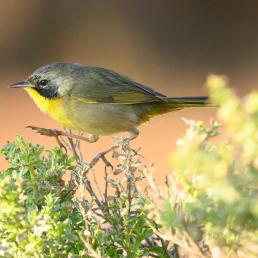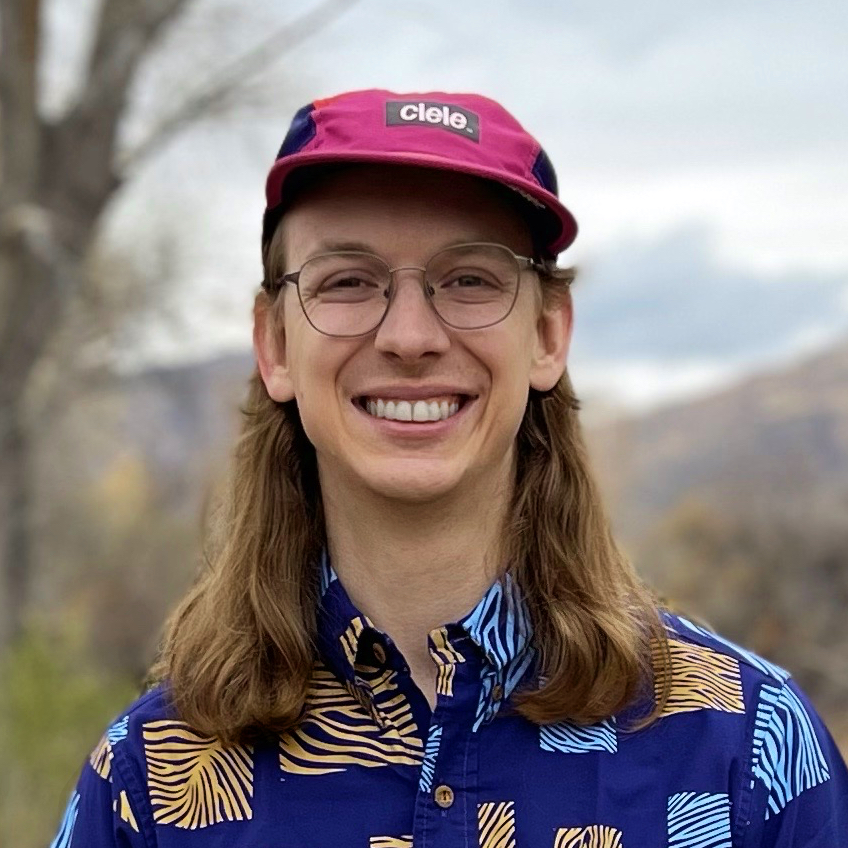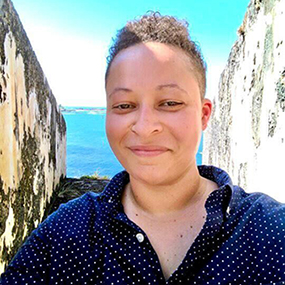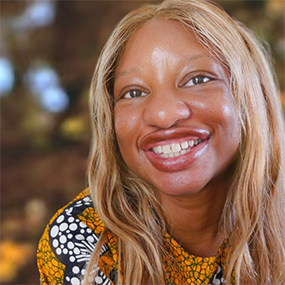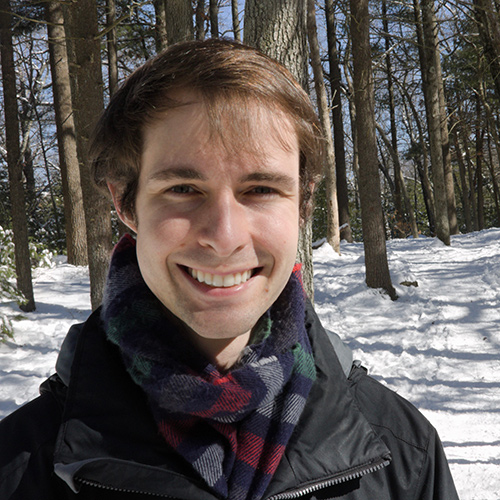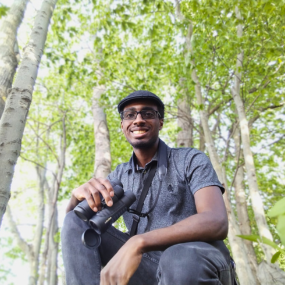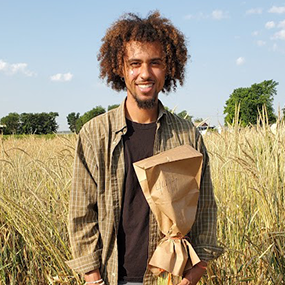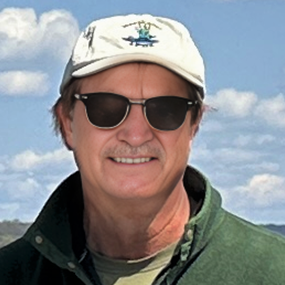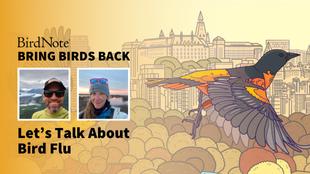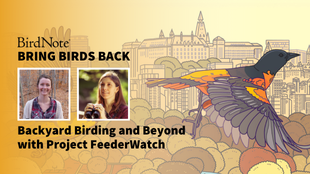

Join BirdNote tomorrow, November 30th!
Illustrator David Sibley and actor H. Jon Benjamin will face off in the bird illustration battle of the century during BirdNote's Year-end Celebration and Auction!
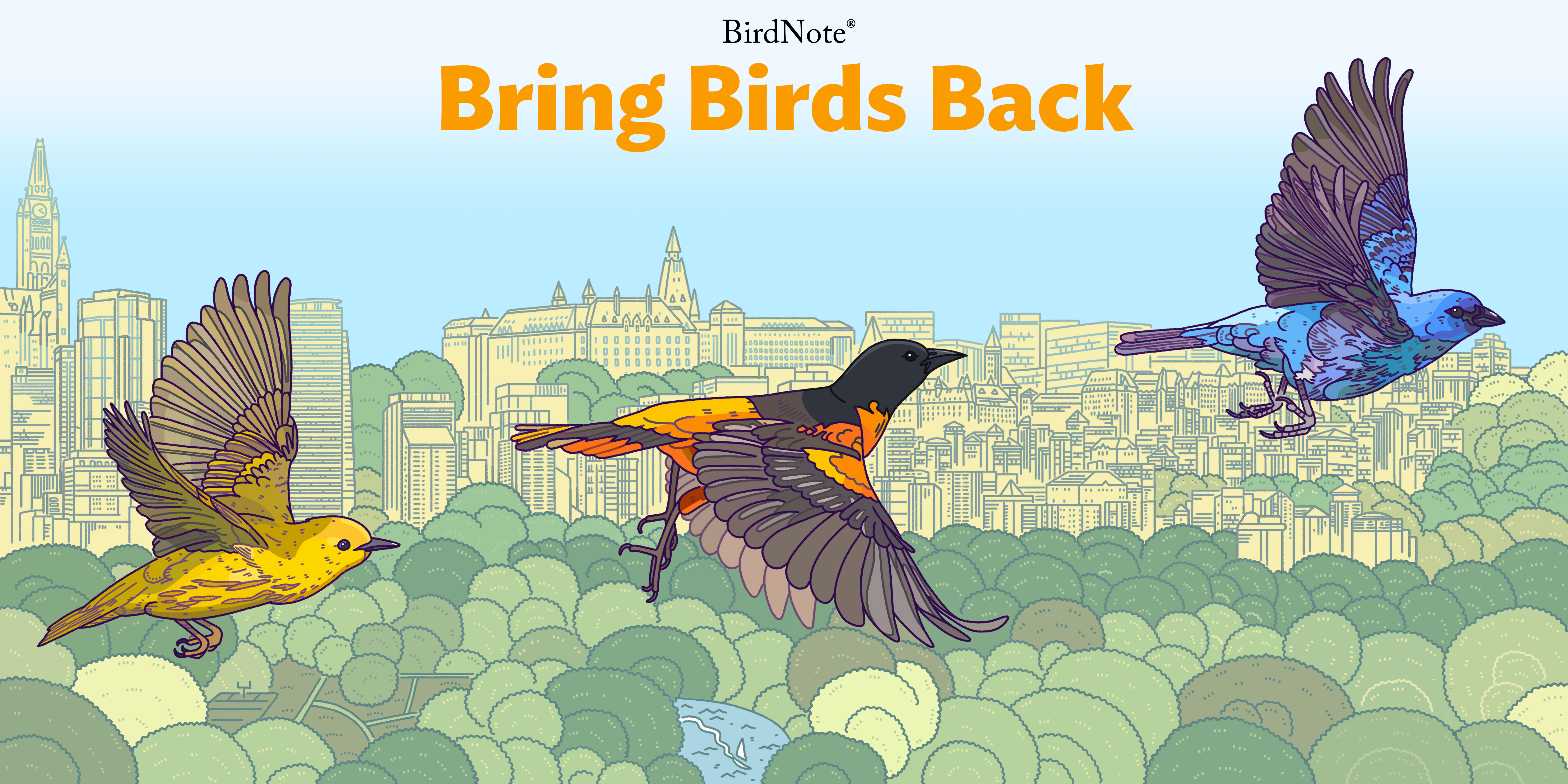
25 years ago, a mysterious cause of eagle and osprey deaths plagued a small town in Arkansas. And in this special episode, we get to the root of it all: small unassuming weeds, also known as invasive aquatic species. In conversation with aquatic plant experts Stacy Holt Jr. and Greg Bugbee, we share what these invasive plants are, how this happened, what they’re doing in other parts of the world (like Connecticut), and ways we can all prevent them from spreading. Co-produced by our guest host, Adé Ben-Salahuddin. Listen in now!
For more information about the From Love to Action campaign, episode transcript and other resources from this episode, visit BirdNote.org.
Want more Bring Birds Back? Subscribe to our show and follow us on Instagram! For more about BirdNote, sign up for our weekly newsletter. And for ad-free listening and other perks, sign up for BirdNote+ here.
BirdNote is a nonprofit. Your tax-deductible gift makes these shows possible.
Bring Birds Back Special Season 5 is sponsored by the Cornell Lab of Ornithology.
Adé Ben-Salahuddin: BirdNote Presents.
[Bring Birds Back stinger]
From BirdNote, this is Bring Birds Back. I’m your guest host, Adé Ben-Salahuddin. I’m a biology education major at Southern Connecticut State University. And my lifelong love of dinosaurs led me here — to the love of their modern-day, feathery counterparts.
[Mysterious music starts]
When birds began falling from the sky in 1994, it triggered a chain of scientific discovery that would last for over 25 years. Known as one of the greatest mass mystery deaths in North American bird history, bald eagles in west-central Arkansas flew to their deaths near DeGray Lake. Eagles were reported flying directly into mountain cliffs and trees, with wobbling feet and unstable wings; a “drunken clumsiness.” A worry to ornithologists, scientists and bird lovers alike, nothing could be further from the norm for these powerful predators.
So… why did more than 70 eagles die from 1994 to 1996 near DeGray Lake? What if I told you that a small unassuming water weed was at the root of it all?
[Musical shift]
In this special season of Bring Birds Back, we're not just talking about how to save the birds... we’re also discussing how to save the planet. This season, we invite you to join us in our quest to inspire a million people to take action toward combating climate change.
And in this episode, we’ll explore the world of invasive aquatic plants — what they are, how they got here, and what kind of threats they pose to our native ecosystems. And most importantly, you’ll learn some ways that we can help stop their spread. We’ll speak to experts working hard to solve these problems on the ground, like Greg Bugbee, a Connecticut plant scientist who will take me out to meet the eagle-killing plant face-to-face in one of its newest hotspots, which just so happens to be my largest local waterway.
Greg Bugbee: Well, welcome to the Connecticut River! I prefer you wear life jackets, but you don't have to if you're a confident swimmer.
Adé Ben-Salahuddin: But first, let’s start at the beginning. I got in touch with Stacy Holt, Jr. — a Kansas-born PhD student and fellow Black evolutionary biologist — to understand the basics about invasive aquatic plants and how they can be a threat to birds, humans and our environment alike.
[Music ends]
Good afternoon, Stacy. Could you introduce yourself to the good people listening at home?
Stacy Holt Jr.: Hi, Adé. I'm glad to be here. I am a second year PhD student at the University of Louisiana Lafayette. I'm a botanist and evolutionary biologist, and I work on how plants adapt to their environment, focusing on both native and invasive plant species. And in general, I just have a love of plants.
Adé Ben-Salahuddin: Oh, you do evolutionary biology, too. Okay, so we're kind of in the same sphere of interest then.
Stacy Holt Jr.: Yeah, so I guess on the evolutionary biology side, I'm trying to look at how plants are adapting to the environments that they live in. And then the practical side of it is: how can we apply this knowledge that we have to either manage invasive species and get rid of them in the field or promote species that we may want to conserve.
Adé Ben-Salahuddin: Right. So, stepping back a little bit, we use the term invasive versus native plants. So what is, sort of, the definition of an invasive plant or an invasive species and why do we usually consider them bad for the environment?
Stacy Holt Jr.: That's a great question, and it can be tricky to answer at times, I think, but in general, an invasive plant species didn't originate in an area or in an ecosystem, and it's usually been transported to this new or introduced range through some type of human mediated dispersal. So humans are bringing this along, typically over a long distance as well.
And the second part to that is that once it gets into this new ecosystem, it starts to cause either ecological or economic harm to that ecosystem. So the ecological harm is usually a reduction in biodiversity. And that just means that you lose a lot of the native plant species or other species that may be in that area due to the introduction of this invasive.
So when you have all of the native species there, they're all playing some role in supporting each other, as well as keeping the system stable and keeping it from changing so quickly, and when all of these organisms have grown to depend on one another, and you start getting rid of some of this biodiversity due to this invasive species, not only do they lose this support that they had for one another, but also they might not get along so well with this invasive plant, which could just cause extra detriment to this ecosystem.
Adé Ben-Salahuddin: You pointed out that their presence is not a good thing usually for the local ecosystems. How often does this actually happen when, you know, plants get moved from one place to another? And do you think that they might be increasing in frequency?
Stacy Holt Jr.: So it happens pretty often, and I think it's happening even more since the world has become interconnected, you could say. And so the more that we move things around from place to place, the more we're bringing invasive species with us, we might bring a new crop to the United States because we think it's pretty. Or we think it's going to provide some type of service and then it ends up being something that's invasive and causing some detrimental harm. And so I can't remember exactly the paper that it is.
I think it's Roman and Darling (2007), but they cite how many invasive aquatic introductions there are in the San Francisco Bay Area every week, and so it is quite frequent.
Adé Ben-Salahuddin: So frequent that they reported, on average, a new species of plant, animal, or protist (think algae or kelp) was introduced every 14 weeks; that’s about four new species each year, nearly quadruple the rate of invasion observed before 1960.
Stacy Holt Jr.: But I guess I should just say even if you have these introductions of new species, there's a process that has to occur for them to become invasive, and so maybe not a hundred percent of those species that we're bringing over are becoming invasive, but the more that it happens, the more invasive species are going to occur.
[Puzzling funk music starts]
Adé Ben-Salahuddin: Four new species a year may not seem like much, but as of 2023 the San Francisco Bay remains the invasion capital of the world. Today, up to 90% of its aquatic species are non-native, and on a global scale over 37,000 invasive species have been introduced by human travel.
With all this in mind, I asked Stacy which plants he finds the most troubling. The European common reed, scientific name Phragmites australis, was among his top few.
Stacy Holt Jr.: Phragmites australis is a taller type of reed grass, and so it gets established in the soils or in the mud. And then grows like five to seven feet tall. I think if you've been anywhere on the coast in the southeast of the United States, you've probably seen this plant.
This species is kind of displacing a lot of the local community on the coast, and when it does so, it's causing a loss or detriment to the coastline, and so we're losing coastline due to other reasons, maybe even like, water levels rising and things like that, but this is causing a loss to the barrier that we have between the coast and the ocean. And so that's just one of the negative things that's a result of this invasion, kind of intermixing with natives, but also causing a collapse in some of the ecosystem services that we really need on the coast of the United States.
Adé Ben-Salahuddin: After giving me the rundown, Stacy then told me about the plant that he primarily studies.
Stacy Holt Jr.: So, Salvinia molesta is native to Brazil, but it's actually been found on all continents except Antarctica. So it first arrived in the United States sometime in the 1990s in Texas and Louisiana. It has a pair of leaves that float above the water that are green and round.
And then it has some highly modified leaves that float below the water, acting as some type of roots for this plant. And so, how it came to the United States, we think, is probably: so somebody was using it for their aquatic garden, and they thought it looked cool and wanted to bring it along.
But once it was released into the waterways, we saw that it began to do things that invasive species do. And so it was kind of taking over freshwater environments that it was introduced into. It's able to grow very quickly. I think it can double its biomass in about two days. So, we see that once it becomes established, it starts creating changes in the aquatic ecosystem. Usually a loss of sunlight to plants underneath, as well as decreased oxygen levels.
So then this can affect organisms that live in the water below that aren't able to leave the lake or the freshwater system, such as fish, causing a decrease in fish populations, moving up the food chain, causing a decrease in organisms that might eat the fish, including things like otters or different bird species that might live in the area that depend on these fish.
[Music ends]
Adé Ben-Salahuddin: In the areas where it comes from, there must be some sort of balance that it has with its local ecosystem to keep it from doing that. And I know in some plants, there's been some idea to maybe bring over some of their predators into a new area to help sort of weed them out, if you will.
Stacy Holt Jr.: Yeah, so that's kind of the thing about invasive plant species. So we kind of wonder how they do what they do. How are they successful in this new environment? And there's a few things that help them do that. So to directly answer your question, there is some type of biological control. In their native environment, there are organisms like insects or even microbes that infect the plant and kill it or, um, eat it and live on it to keep it in check. But there's also other plant species around that are able to compete with this plant and make sure that it doesn't take over the ecosystem.
And those plants and those organisms have been around this plant, Salvinia molesta, for a long period of time. So they've had those thousands to millions of years to kind of adjust to one another. But when you bring it into this new environment, it doesn't really have that control type of mechanism in the ecosystem yet.
Adé Ben-Salahuddin: Okay. So, moving forward a little bit, uh, we were talking about effects on both the plants and the animals. What are the specific problems that Salvina is introducing, more so on the human side of things?
Stacy Holt Jr.: So, it's more invasive in the southern United States, but usually temperature is the thing that is limiting its spread northwards.
I was talking to locals at these different fresh water bodies and this plant is really just kind of limiting their use of these local ecosystems and their enjoyment. So whether that be water sports or birdwatching or even traveling on the lake through boat or kayak, this plant is just making all those things more difficult, if not impossible. But also, Salvinia molesta is known to harbor things. I guess a good example would be mosquitoes, increased mosquito populations, and causing a higher spread or rate of disease in areas where it's a really bad infestation.
And so I think, just a combination of those two things.
[Puzzling music starts]
Adé Ben-Salahuddin: And these impacts typically take years of dedicated research, data and developments to slowly uncover … For instance, those bald eagles we discussed at the beginning of the episode? The cause of their deaths went unsolved for two and a half decades. Although it became clear that a toxin was to blame, exactly what kind and what produced it remained unknown.
That was, until 2021, when Steffen Breinlinger and colleagues discovered and published their findings in the journal, Science.
The culprit: a cyanobacteria. And its accomplice? Hydrilla, more commonly known as water thyme.
Greg Bugbee: Hydrilla in the Southeast, particularly the Carolinas, Georgia, and that area… they noticed that eagles and Osprey were dying.
Adé Ben-Salahuddin: That’s Greg Bugbee, Associate Scientist at the Connecticut Agricultural Experiment Station and Principal Investigator of their Invasive Aquatic Plants Program. We met at the dock of Deep River Landing, one of the Connecticut River’s oldest historical ports.
Greg Bugbee: After a lot of research, took years and years, they were able to determine that there's what's called a cyanobacteria associated with the Hydrilla that grows on the Hydrilla leaves; that when ingested by birds of prey, particularly, it causes brain damage and the birds will die.
[Music ends]
Adé Ben-Salahuddin: Scientists learned that, in the right conditions, the cyanobacteria found on Hydrilla releases a pair of neurotoxins that attacks the nervous system and destroys nerve cells in the brain. Symptoms of this neurological disorder, called vacuolar myelinopathy, include unstable balance and stiff legs.
Greg Bugbee: So there is a worry that that type of cyanobacteria could be associated with this Hydrilla and cause dieback of our much recovered Bald Eagle population Osprey population, here in the river system.
Now, we haven't seen that yet, and it may be something that's more specific to the warmer southern states, but we currently have samples being sent out to the group that did the work, testing them to see if there's any of that going on in the Connecticut River.
Adé Ben-Salahuddin: Since the fatal disease is not yet curable, it remains a major concern as Hydrilla continues to spread. The Connecticut River Hydrilla was discovered in 2016 and has been spreading much faster and more aggressively than the conventional form.
Greg Bugbee: This is a, what we call a genetically distinct strain of Hydrilla that up until this year, it was only known to exist in the Connecticut River.
And it has some different characteristics than anything that's really been seen anywhere else in the world.
I'm just gonna reach down and grab some here.
[Water sloshing]
Adé Ben-Salahuddin: Connecticut River Hydrilla can be identified by its circular pattern of leaves, called a whorl. While the old school Hydrilla is known to have 5 or more leaves in each whorl, this peculiar strain has from 9 to 11 or more.
Greg Bugbee: We figure there's probably over a thousand acres of it right now in the river. And up until this year, we had not observed it in any other rivers or anything; it was strictly the Connecticut River.
So now we know it's in four lakes. Basically, it's being found at the boat launch ramps. You can see it being tracked out and dropped well up off the ramp. And we're pretty confident it's being moved by boats and boat trailers.
And that brings up the whole issue of, well, what can you do to prevent that?
[Concerning but playful music starts]
Adé Ben-Salahuddin: The concern for the waterways is major — and has inspired both State and Federal entities to get more involved. From the newly formed Office of Aquatic Invasive Species to the Army Corp of Engineers joining the Northeast Aquatic Nuisance Species Panel — Greg plays an instrumental role in them all and knows more than anyone that it’s a long game.
Greg Bugbee: So I've been with the Ag Station now for over 40 years. Part of it, my initial work was on the soil side and for the last — over two decades it's been looking at invasive aquatic plants, and the damage they're doing to our water bodies in the state.
Trying to find solutions through research and management and that sort of thing.
Adé Ben-Salahuddin: As we moved from the dock to Greg’s boat, I could see the expanse of Hydrilla throughout the river, and there was already a sizable pile on the boat landing, a troubling sight.
So if we're all ready to go?
Greg Bugbee: I prefer you wear life jackets, but you don't have to if you feel you're a confident swimmer.
Adé Ben-Salahuddin: After the break, meet us back on Greg’s boat to learn all about the threats Hydrilla poses, how climate change is playing a major role in amplifying these problems — and what we can do about it.
Uh, I am but I wouldn’t mind taking a life jacket.
Greg Bugbee: I'm gonna wear mine.
Producer: Your boat, your rules.
Adé Ben-Salahuddin: Be right back.
[Boat engine starts]
[Music stops]
[MIDROLL]
Greg Bugbee: So much of this river is–you just feel like you could be in Alaska, you know, just no sign of development. Very natural.
[*chirp*]
You hear a little, ‘chirp, chirp, chirp.’ We have what's called a depth finder on the boat. Right now, it's 4.7 meters, so that's quite deep. The beeping you hear is when it senses fish under the boat. So it'll beep.
Adé Ben-Salahuddin: So this section here is specifically Deep River?
Greg Bugbee: Yep, this is the Deep River. See, we're coming up on, uh, some dense patches of Hydrilla, it can be impenetrable. We have to avoid this with the boat because if we get in it we will have a very difficult time getting the boat out of it.
Adé Ben-Salahuddin: So, can you set the scene for us a little bit?
Greg Bugbee: Alright, so this is the Connecticut River. Often people don't realize just how scenic this is. It's an estuary, a river system that has a lot of ecological value. You know, we're going to see the problem we're out here to see, which is the Hydrilla, but I would think we're going to see Osprey, we're going to see some Bald Eagles.
For those of you who don't know the Connecticut River, it starts, actually, at the Canadian border, goes between Vermont and New Hampshire, and splits Massachusetts down the middle, and then right through the middle of Connecticut. It's low tide right now. And at low tide, some areas are more difficult to get into than others.
This year, there's been tremendous flow like we've never seen in all the years we've been surveying it. The flooding that's occurred was nothing like we've ever seen. Uh, we thought that might have a serious impact on the Hydrilla but it really has not. The Hydrilla seemed to have survived it just fine, and in some cases it has actually spread.
Adé Ben-Salahuddin: Would you consider Hydrilla to be the biggest problem you've encountered so far? Or are there others?
Greg Bugbee: Well, in Connecticut, there are a lot of other invasive species, so it's hard to say. I think this is the biggest new threat to lakes and ponds, because we know now it's spreading there.
There's probably more acres of Hydrilla in the state than probably any other aquatic invasive plant right now, total. You're gonna have a lot more stakeholders up and down the river system.
Adé Ben-Salahuddin: Do we know what effect it might have on human health as well? Or is it just a bird-specific problem?
Greg Bugbee: In some of the seminars I've been to on the problem, they feel it could affect human health. They feel it could affect fish, birds, mammals. That possibility is there.
The issue of climate change always comes up. And is this problem we're seeing a climate change related issue? I mean, these types of problems were traditionally a problem of the southern states. We know that. But we also know that Hydrilla can exist as far north as almost the Arctic Circle. I mean, it's a very hardy plant. So, I think we all suspect it's playing some role in why we're getting these issues.
Adé Ben-Salahuddin: Indeed, numerous studies by government agencies and academic researchers from around the world indicate that Hydrilla stands to benefit a lot from climate change. Research has found that rising water temperatures and increasing carbon dioxide levels accelerate the growth rate of these plants. And a 2017 study predicted that Hydrilla could expand its range northward by at least 20% by the year 2070, if current climate trends continue. This would mean that Hydrilla could get as far as southern Canada and reach densities there higher than what Greg was showing me on the Connecticut River.
Greg Bugbee: Right here, we are moving along patches of Hydrilla.
So, what you'd like in a river is a lot of different plants. You don't like what's called monostands, which is basically one plant dominating the entire system. It's usually not a good idea. There's a term called diversity, which, it's a term that we usually use to describe ecosystems that have a fairly large number of plants with the abundance of each reasonably high.
This is basically what we call a monostand Hydrilla. And we're not going to be able to go too much further or we'll get stuck in it.
Adé Ben-Salahuddin: Yeah. I can definitely see. There is so much here.
As we continued to move through the river, we came across another important aquatic plant that’s currently being threatened by the acres of Hydrilla: eelgrass.
Greg Bugbee: Which is an important grass, uh, in the river. And this Hydrilla is just overwhelming it, and we think we're gonna lose the eelgrass beds and they'll be replaced with this.
Looks like grass, about a half inch wide. Uh, you can see it right there. That's a very important habitat. There's a, um, one of the fish that uses this for its reproduction and particularly for the small fry to grow up and mature is what's called Menhaden. Some people call them Bunker. And they are often touted as one of the most important fish in the sea because so many different types of fish feed on them.
And, uh, you will see huge schools of them in this river. So there's some concern that that could be affected and have wide ranging effects on the Atlantic fish populations.
Adé Ben-Salahuddin: Having seen only a fraction of the extent to which Hydrilla has invaded the river, I asked Greg the obvious question: how does he plan to get rid of it?
Greg Bugbee: Well, um, to get rid of this, there's the thinking that maybe harvesting, mechanical harvesting, or you can get machines that cut it and take it up into a hopper and take it away.
That probably isn't going to be all that effective because you're going to leave the root system behind. It's going to re-sprout, but some sort of harvesting is always on the table.
Biocontrols, if you could go to the native range, find the natural, um, controls, potentially bring them back, study them, and make sure they're not going to cause more of a problem than they solve, they could be released.
We're nowhere near that yet, uh, at this point. There is certainly a lot of concern that some sort of control measure needs to be done now or quickly.
Adé Ben-Salahuddin: Greg said there’s also the option of using an herbicide, which is known to be fairly effective:
Greg Bugbee: And the first steps for that, particularly when looking at effectiveness and safety, is okay, if some sort of EPA approved herbicide is used, where is it going to go? And how long will it last in a certain area?
So this year, we have collaborated with the work of the Army Corps to do what's called dye testing, where they put in a pink-colored non-toxic food grade dye and monitor where it goes in the river. And there’s five sites where this dye testing was done this year.
And detailed information is now available on how this moves, cause you don't want to harm non-target plants. You don't want to harm the eelgrass, for instance. You know, you don't want to get rid of everything.
I'm very happy that we've got the state support as well as the federal support.
There are, in the Connecticut River, what's called state listed species. These can range from fish like a sturgeon, blueback herring. And there's a lot of plants that are rare and endangered and you got to make sure whatever you do is not going to harm them.
Adé Ben-Salahuddin: So could the, like, the average, I guess, riverside enjoyer, just like, grab some and pull it out themselves?
Greg Bugbee: Yeah, the idea of, you know, in small areas, you know, just pulling it out and trying to get as much of the root system as you can, particularly if you can do it more than once or twice a year, but obviously when you've got a thousand acres that's not going to be effective. People have asked: well, isn’t there a beneficial use for it?
I had a summer assistant helping me, pulled out what looked like kind of a health bar type thing, and we were reading the ingredients, and it said Hydrilla.
[Laughs]
So, I guess it can be used for other things, but we mentioned that cyanobacteria issue, you've got to be really careful of how you deal with it.
Adé Ben-Salahuddin: So for any uh, energy bar companies listening in, you could maybe use it, get in on this problem.
Ooh, is that actually a Bald Eagle? Oh, it was circling just now. Where'd it... I always miss these birds that are, like, right in the blue. Oh, it is a Bald Eagle. Oh, okay. I think this is like maybe the third or fourth time I've ever actually seen one.
Greg Bugbee: Oh, no, we see them all the time. We actually see them on lakes as well nowadays.
So you're going to notice here that, uh, all these dead trees, those are all ash trees that have been killed by the emerald ash borer. That's an invasive insect.
Adé Ben-Salahuddin: When did those show up, the insects?
Greg Bugbee: Ah, that's a good question. Certainly they, they basically killed all the ash trees in the state, so this has to be ten years ago or more.
Adé Ben-Salahuddin: And unfortunately, those aren’t the only invasive species in and around Connecticut’s waterways. As we went on, Greg mentioned some other aquatic plants he’s had to deal with. There’s fanwort, a South American species and one of the most widespread of the state’s invasives. The hardy curly-leaf pondweed of Eurasia and Africa can survive harsher conditions than many native plants, including being frozen over completely during wintertime. And then there’s Eurasian watermilfoil, which in some parts of North America has hybridized with its native cousins to produce an even more prolific invasive. These are just a few of the many confirmed species that have taken hold in Connecticut’s waterways so far.
Greg Bugbee: And just about all of these plants at one point were a plant that was sold for aquariums. So you might ask, how do plants from an aquarium get into a lake?
Well, people get tired of their aquariums. And they feel the right thing to do is to go dump everything in the lake, including the fish, so they don't die. And that's how a lot of these plants get established. The aquarium trade has been regulated to some extent on what they can sell for plants
We've actually found the entire fish tank in a lake. They threw the whole tank and all in. And, uh, we actually are using it now in our greenhouse. So, that's an issue.
[Reflective music starts]
Adé Ben-Salahuddin: While we recognize the issue with invasive aquatic plants may sound overwhelming, Stacy Holt., Jr offered a healthy list of things you can do at home — individually and in groups — to help prevent the spread of these species.
Stacy Holt Jr.: First, just making yourself familiar with what are these invasive species in my area, but also what are the native species. One good thing is to promote planting native species in your area, because that can fill some of those disturbed gaps that invasive species are trying to come in and take over.
So that's one thing, is just becoming familiar with the plant communities in your area.
I know when I went out and sampled for Salvinia there were signs at some lakes that say, this invasive species is present, be on the lookout for it and definitely, clean either your boat or your kayak whenever you leave this area to make sure you don't spread it to other water bodies. And then finally, I think, either asking some of the local park managers, or people higher up in legislature to consider promoting restrictions on some of these invasive plant species and trying to limit their spread in that way would also be helpful.
Adé Ben-Salahuddin: And Greg:
Greg Bugbee: And it usually comes down to education, clean, drain, and dry when people bring boats in and out, inspections at ramps, that sort of thing. And that's, you know, in the process of being improved.
Adé Ben-Salahuddin: Some other tips to keep in mind on your nature ventures: Drive only on established roads, away from weeded areas; Don’t pick or transport wild flowers you can’t identify; clean your boots before and after hiking to rid them of seeds and pathogens; learn about the plants in your home garden and replace any invasives with natives; don’t release aquarium fish and plants into the wild — oh, and, clean the bottom of your boat!
And if you live in the U.S., you can check out your regional, federal or state level environmental agencies for local advice. On the Connecticut page, you can keep track of the ongoing research efforts of Greg and his colleagues, and even request someone from the agency to come out and survey your local water body.
[Music ends]
[River soundscape fades in]
Following our interviews, I spent the afternoon sitting on the dock, reflecting on what I’d learned. I had gone to see about a single invasive aquatic plant, but left with much more.
Thinking about how ecosystems develop and change overtime, I wondered how much the landscape has changed under the influence of European colonialism. How these invasive plants didn’t get here on their own — and many of their arrivals were not an accident.
When settlers first came to these lands, they brought things to remind them of their origins: Agriculture, horticulture, the aquarium trade. Even the large white Mute Swans in the river descended from birds brought over from Eurasia.
But they’re here now, creating a wave of effects that ripple through entire ecosystems and economies. Just recently, the UN Environment Program recognized invasive species as one of the five major factors driving global biodiversity loss, with a calculated annual cost at over $423 billion.
[Outro music fades in]
Even in this moment, I’m reminded that not all is lost. Not yet. Environmental maintenance and awareness campaigns are underway as scientists and local communities work towards solutions. Even the washed up Hydrilla patch had been brushed up and carted away; probably not to make an energy bar, but you never know.
Whether or not we accept this as our new normal, what we do know is that we can both learn to adapt and inspire change at the same time.
BirdNote is on a mission to inspire a million people to take action to help birds — and our environment over the next three years. And in this special season of Bring Birds Back, our goal is to show you that every little action for you, is an even greater action for our beloved birds.
For more information on our guests, what you can do to combat invasive plants or how you can join us in our fight against climate change, visit BirdNote.org.
Don’t forget to follow us @BringBirdsBack on Instagram for show updates, exclusive behind-the-scenes content and more.
Thanks to Stacy Holt, Jr. and Greg Bugbee for their profound contributions to this episode.
Bring Birds Back is created by our producers, Mark Bramhill and Sam Johnson. Managing Editor, Jazzi Johnson; Fact-checker, Conor Gearin; and Content Director, Jonese Franklin. Music is by Cosmo Sheldrake and Blue Dot Sessions.
And this special episode was hosted and co-produced by me, Adé Ben-Salahuddin. Follow my socials and learn more about my work highlighting the diversity of the ancient past at BirdNote dot org.
Thanks for listening, stay safe and tune in next time!
[Music ends]
[Boat sound fades in]
Greg Bugbee: Do you keep a tally of how many birds that you've seen in your- over your lifetime?
Adé Ben-Salahuddin: Uh, the species count, yes. I want to say I'm at 130 species.
Greg Bugbee: I was hoping we could add something to your list today, I don't know.
Adé Ben-Salahuddin: Well, the bald eagle always counts.
Greg Bugbee: Uh huh.
Adé Ben-Salahuddin: Do you have a favorite bird or plant?
Greg Bugbee: Ah, favorite bird. I like wood ducks. One of my favorites. I live on a lake, so we see them now and then, and they're always fun to watch.
Hi! My name is Stacy Holt Jr, and I am Botanists and Evolutionary Biologist studying invasive
plant species and the evolution of adaptive traits in natural plant populations. I am originally from Kansas where I completed my master’s degree at Wichita State University, and I am now in the second year of my PhD at the University of Louisiana at Lafayette. I have a love and passion for plants and have been involved in research ranging from invasive fern species to perennial agriculture. My research interests include invasive species, plant adaptation, molecular genetics and phylogenetics, and prairie ecosystems. I am also a huge supporter and advocate of herbaria and the maintenance and use of museum specimens. In the future I would like to remain in academia and teach or work and continue my research as part of an herbarium. I really enjoy science and I have a passion for learning, so being able to share my research and new ideas about the systems I am studying is always exciting!"
Greg Bugbee is an Associate scientist at the Connecticut Agricultural Experiment Station where his career has spanned over 40 years. He leads the Invasive Aquatic Plant Program and Office of Aquatic Invasive Species. He has led aquatic plant surveys of nearly 400 Connecticut lakes and ponds and has directed research projects on invasive aquatic plant control statewide. He has numerous popular and scientific publications and is the recipient of the Journal of Aquatic Plant Management “Outstanding Paper Award.” Recently, his surveillance of the Connecticut River has documented an extensive infestation of a genetically distinct strain of hydrilla that poses a severe threat to the native ecosystem.
